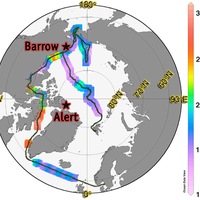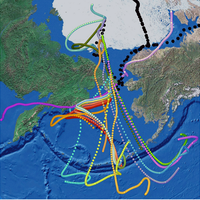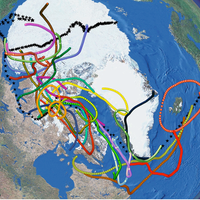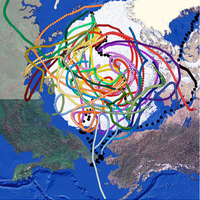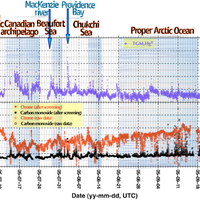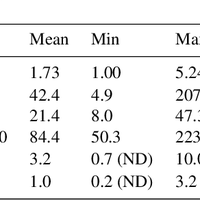Abstract
Using the Swedish icebreaker Oden as a platform, continuous measurements of airborne mercury (gaseous elemental mercury (Hg), divalent gaseous mercury species HgIIX2(g) (acronym RGM) and mercury attached to particles (PHg)) and some long-lived trace gases (carbon monoxide CO and ozone O3) were performed over the North Atlantic and the Arctic Ocean. The measurements were performed for nearly three months (Julyg-September 2005) during the Beringia 2005 expedition (from Göteborg, Sweden via the proper Northwest Passage to the Beringia region Alaska-Chukchi Penninsula-Wrangel Island and in-turn via a north-polar transect to Longyearbyen, Spitsbergen). The Beringia 2005 expedition was the first time that these species have been measured during summer over the Arctic Ocean going from 60° to 90° N. During the North Atlantic transect, concentration levels of Hg, CO and O 3 were measured comparable to typical levels for the ambient mid-hemispheric average. However, a rapid increase of Hg in air and surface water was observed when entering the ice-covered waters of the Canadian Arctic archipelago. Large parts of the measured waters were supersaturated with respect to Hg, reflecting a strong disequilibrium. Heading through the sea ice of the Arctic Ocean, a fraction of the strong Hg pulse in the water was transferred with some time-delay into the air samples collected ∼20 m above sea level. Several episodes of elevated Hg in air were encountered along the sea ice route with higher mean concentration (1.81±0.43 ng m-3) compared to the marine boundary layer over ice-free Arctic oceanic waters (1.55±0.21 ng m-3). In addition, the bulk of the variance in the temporal series of Hg concentrations was observed during July. The Oden Hg observations compare in this aspect very favourably with those at the coastal station Alert. Atmospheric boundary layer O3 mixing ratios decreased when initially sailing northward. In the Arctic, an O3 minimum around 15-20 ppbV was observed during summer (July-August). Alongside the polar transect during the beginning of autumn, a steady trend of increasing O3 mixing ratios was measured returning to initial levels of the expedition (>30 ppbV). Ambient CO was fairly stable (84±12 ppbV) during the expedition. However, from the Beaufort Sea and moving onwards steadily increasing CO mixing ratios were observed (0.3 ppbV day-1). On a comparison with coeval archived CO and O3 data from the Arctic coastal strip monitoring sites Barrow and Alert, the observations from Oden indicate these species to be homogeneously distributed over the Arctic Ocean. Neither correlated low ozone and Hg events nor elevated concentrations of RGM and PHg were at any extent sampled, suggesting that atmospheric mercury deposition to the Arctic basin is low during the Polar summer and autumn. © Author(s) 2010.
Figures
Register to see more suggestions
Mendeley helps you to discover research relevant for your work.
Cite
CITATION STYLE
Sommar, J., Andersson, M. E., & Jacobi, H. W. (2010). Circumpolar measurements of speciated mercury, ozone and carbon monoxide in the boundary layer of the Arctic Ocean. Atmospheric Chemistry and Physics, 10(11), 5031–5045. https://doi.org/10.5194/acp-10-5031-2010


